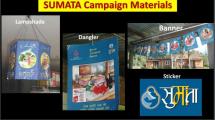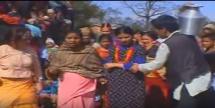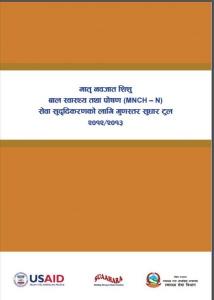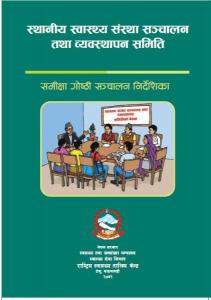SUMATA Billboards
The Nepal Family Health Program (NFHP-I) was a six-year (2002-2007) bilateral activity of United States Agency for International Development, Nepal (USAID/N) with the Government of Nepal. Its overall goal was to support the Government’s long-term goal of reducing fertility and under-five mortality within the context of the National Health Policy and Second Long-Term Health Plan 1997-2017.
The SUMATA initiative was launched on 8 March 2002 as a multilevel Safe Motherhood behavior change initiative designed to support the efforts of the Government of Nepal to reduce the high maternal mortality rate in Nepal.
SUMATA is an acronym for Care, Share, and Prepare. In Nepali, it reads:SU: Sushar Garaun (Care), MA: Maya Mamata Badaun (Share), TA: Tayari Garaun (Prepare)
SUMATA communication strategies were developed with standardized SM messages, which have been incorporated into IEC/BCC materials such as posters, billboards, lampshades, danglers, banners, stickers, radio spots, jingles and dramas, TV dramas, and street theater. Radio dramas highlighting general SM messages have been broadcast nationally.
As a part of the support to SUMATA Campaign, SUMATA Hoarding Boards, or billboards, were installed in District public health office or hospital premises of 17 NFHP core program districts. The boards were also established in Ministry of Health and Population (MoHP) premises, Maternity Hospital, and Primary Health Care Center (PHCC) premises of Dhapakhel, Lalitpur which further were redesigned and maintained in 2005.
Source: Johns Hopkins Bloomberg School of Public Health/ Center for Communication Programs
Date of Publication: March 25, 2019
SIMILIAR RESOURCES
Tools
Examples
- Promoting Quality Malaria Medicine through Social and Behavior Change Communication
- Community Communication MNCH e-Manual: Participatory Health Promotion Sessions
- The Infection Control Symbol Package
- Men's Health Kit
- Suaahara Training Guidelines and Participant Handbooks
- The Future of Malaria Social and Behavior Change Communication
- Guide to Strategic Communication Online
- Infection Control Symbol Templates
- GESI Toolkit
- Family Planning Counselling Kit









